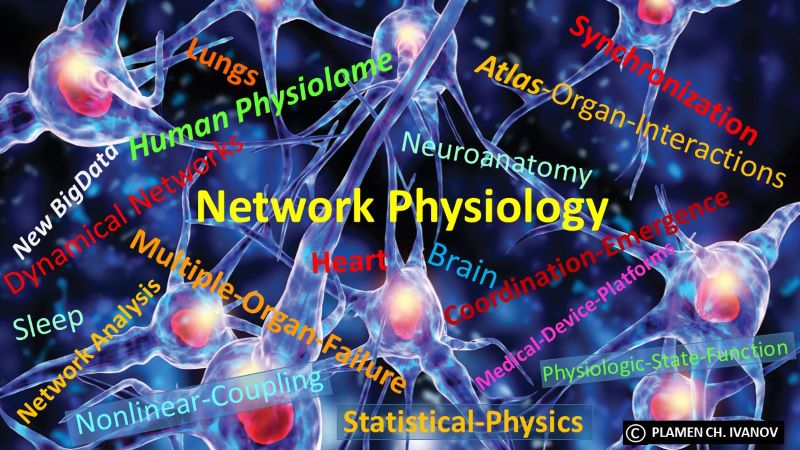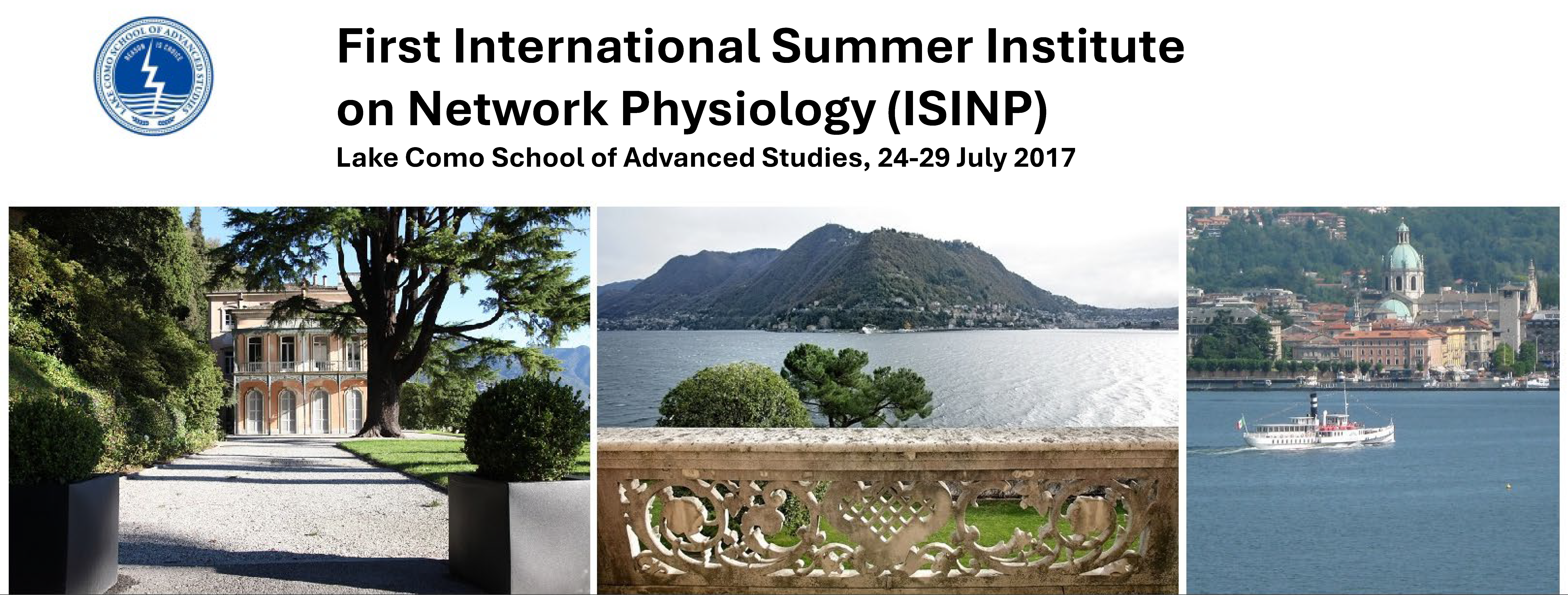Speakers
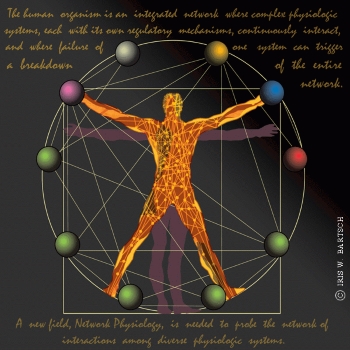
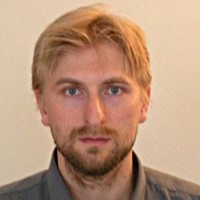
Ronny P. Bartsch
Dr. Bartsch studied physics in Konstanz, Germany where he received a M.Sc. degree in theoretical physics in July 2003, and at Bar-Ilan University, Israel where he received his PhD in June 2009. He was a post-doctoral fellow at the Division of Sleep Medicine, Harvard Medical School from 2008 till 2012, after which he joined the faculty at the same division as an Instructor in Medicine. In April 2014, Dr. Bartsch joined the Physics Department at Boston University as a Research Assistant Professor. Currently he is a Senior Lecturer at the Physics Department, Bar-Ilan University. Dr. Bartsch applies methods from statistical and computational physics and nonlinear dynamics to study physiologic systems, sleep regulation, circadian rhythms, and how physiologic transitions affect coupling between organ systems. He is recipient of the prestigious German DAAD Fellowship for the period 2010-2012. In 2012 he was awarded the Young Investigator of the Year Prize by the German Society of Sleep Medicine, and in 2014 he won a “Marie Curie” fellowship from the European Commission.

Stefano Boccaletti
Professor Boccaletti received his PhD in Physics at the University of Florence in 1995. He was Associated Professor in Physics at the University of Navarre, Spain, winner of the individual EU grant “Marie Curie”, senior researcher at the National Institute of Optics, Florence, Italy, and Chair of the Computational Systems Biology Department at the Technical University of Madrid. Currently, he is senior Researcher at the Institute for Complex Systems in Florence and Scientific Attache’ at the Italian Embassy in Israel. He is also Visiting Scientists at the Weizmann Institute of Science, and Honorary Professor at the University of Tel Aviv, the University of Bar Ilan, and the East China Normal University of Shanghai. His main contributions are in the areas of pattern formation and competition in excitable media, control and synchronization of complex dynamics, and theory of complex and multi-layer networks with applications in social sciences, technology, biology and medicine. He is the Editor-in-Chief of the journal Chaos, Solitons and Fractals, member of the Editorial Boards of Chaos (AIP), International Journal of Bifurcation and Chaos, and Associated Editor of the journal Mathematical Biosciences and Engineering (American Institute of Mathematical Sciences). Prof. Boccaletti is a Honorary Member of the Italian Society for Chaos and Complexity, Doctor Honoris Causa of the University Rey Juan Carlos of Madrid, and member of the Academia Europaea.
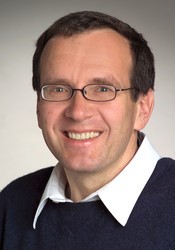
Eberhard Bodenschatz
Professor Bodenschatz received his doctorate in theoretical physics from the University of Bayreuth in 1989. In 1991, during his postdoctoral research at the University of California at Santa Barbara, he received a faculty position in experimental physics at Cornell University. From 1992 until 2005, during his tenure at Cornell he was a visiting professor at the University of California at San Diego (1999-2000). In 2003 he became a Scientific Member of the Max Planck Society and since 2005 is at the Max Planck Institute for Dynamics and Self-Organization, Göttingen and since 2007 Professor of Physics at the Georg August University of Göttingen. He continues to have close ties with Cornell University where he is Adjunct Professor of Physics and of Mechanical and Aerospace Engineering. His research is focusing on the Dynamics of Complex Matter in Nature. He is an elected member of the Academy of Sciences at Göttingen (Akademie der Wissenschaften zu Göttingen), received a honorary doctorate from the ENS Lyon, and is elected fellow of the American Physical Society (APS), the Institute of Physics (IOP), the European Physical Society (EPS), and the European Mechanics Society (EuroMech). He is a recipient of the Stanley Corrsin award of the APS. He is chair of the Chemistry, Physics and Technology Section of the Max Planck Society, and Member of the Steering Committee of the Max Planck Synthetic Biology Initiative. For 11 years he was Editor in Chief of New Journal of Physics. He serves on the editorial boards of PRF and Annual Review of Condensed Matter Physics.
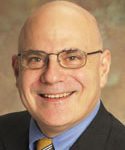
Timothy G. Buchman
Professor Buchman, PhD, MD, FACS, FCCP, MCCM is currently the founding director of the Emory University Critical Care Center (ECCC), which is integrates ICUs throughout the Emory Healthcare system. The Center has assembled clinicians, teachers and investigators from diverse disciplines to deliver the right care, right now, every time. He is a member of the External Faculty of the Santa Fe Institute, and advisor to the James S. McDonnell Foundation. Before joining Emory University, he served as the Edison Professor of Surgery and Director of Acute and Critical Care Surgery at Washington University in St. Louis. Prior to his 15 years on the faculty at Washington University, Dr. Buchman directed the surgical intensive care unit and founded the trauma service at Johns Hopkins Hospital in Baltimore, where he completed his surgical training. His research has spanned the bench-to-bedside continuum, including NIH-funded studies of physiological dynamics; of patient monitoring; of the genetics of sepsis and of ICU end-of-life care. In the 1990’s, Dr. Buchman noticed that patients dying of sepsis seemed to have very monotonous vital signs, and demonstrated that the onset of sepsis is associated with uncoupling (and failure to recouple) of the various vital organs. This uncoupling in various critical illness forms the basis for novel monitoring and detection strategies. Dr. Buchman is past president of the Shock Society, the Society for Complex Acute Illness and the Society of Critical Care Medicine, the latter being the largest organization of critical care professionals worldwide. His current research work focuses on precision medicine in the acute care space, and his clinical activity focuses on promoting situation awareness in critical care to achieve better health, better care and lower costs.

Edward T. Bullmore
Professor Bullmore, MB, PhD, FRCP, FRCPsych, FMedSci, trained in medicine at the University of Oxford and St Bartholomew’s Hospital, London; then in psychiatry at the Bethlem Royal and Maudsley Hospital, London. He moved to Cambridge as Professor of Psychiatry in 1999 and is currently Clinical Director of the Behavioural and Clinical Neuroscience Institute, Co-Chair of Cambridge Neuroscience, Scientific Director of the Wolfson Brain Imaging Centre, and Head of the Department of Psychiatry, in the University. He is also an honorary Consultant Psychiatrist and Director of R&D in Cambridgeshire and Peterborough Foundation NHS Trust; and, since 2005, he has worked half-time for GlaxoSmithKline, currently focusing on immuno-psychiatry. He has been a pioneer of brain connectivity and network analysis with a focus on graph theoretical methods. He has published more than 500 scientific papers and his work has been highly cited. He recently co-authored “Fundamentals of Brain Network Analysis”.
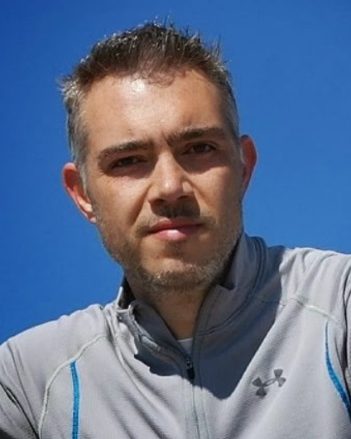
Luca Faes
Dr. Faes is Senior Researcher at the Bruno Kessler Foundation and the BIOtech Center of the University of Trento, Italy. He obtained his PhD in Electronic Engineering at the University of Trento (2003). He has been research fellow at the Department of Physics of the University of Trento (2004-2008) and visiting scientist at the State University of New York (2007), Worcester Polytechnic Institute (2010), University of Gent (Belgium, 2013), University of Minas Gerais (Brazil, 2015), and Boston University (2016). He is a member of the IEEE Engineering in Medicine and Biology Society (IEEE-EMBS), the European Study Group on Cardiovascular Oscillations (ESGCO) and served on the Program Committee of several conferences on medical signal processing. He is Associate Editor of the journal Computational and Mathematical Methods in Medicine, and of the Annual International Conference of the IEEE-EMBS, where he regularly organizes symposia and invited sessions. He was organizer and Program Chair of the 8th ESGCO conference (Trento, Italy, 2014). He works in the fields of statistical physics, computational physiology and neuroscience with focus on developing methods for multivariate time series analysis in the time, frequency and information domains, with applications to cardiovascular neuroscience, brain connectivity and brain-heart interactions. His recent research covers the information-theoretic analysis of physiological networks aimed at the characterization of brain, cardiac and multi-organ physiological mechanisms in physiological states and pathological conditions.

Alexander Gorbach
Dr. Alexander Gorbach worked at the Institute of Higher Nervous Activity and Neurophysiology, USSR Academy of Sciences, Moscow, Russia, where he was awarded a PhD in human and animal physiology for design and validation of optical magneto-encephalography method. In 1991 Dr. Gorbach was invited to be a postdoctoral research fellow at the National Institute of Neurological Disorders and Stroke (NINDS), NIH, USA. His project was focused on clinical application of SQUID magneto-encephalography for cortical mapping. In 1992-1993 Dr. Gorbach was an Assistant Professor at the University of California School of Medicine at Los Angeles. In 1994-1995 he was a consultant for GE-Corporate Research & Development, Schenectady, New York, and for Hughes Research Laboratories, Malibu, California, USA. In 1995 Dr. Gorbach was invited to joint Surgical Neurology Branch, NINDS, NIH as a Special Expert. He was first to introduce intraoperative infrared functional imaging method capable to monitor the human cortex in real time. In 2000 he designed a procedure for objective, real-time, intraoperative assessment of perfusion during renal transplantation in human. In 2005 he described renal thermal oscillations during steady state and ischemic conditions in animals and humans. Currently, Dr. A Gorbach is a staff researcher and Chief of Unit at the National Institute of Biomedical Imaging and Bioengineering, NIH, USA. His main interests are in the areas of thermoregulation, functional connectivity of the brain, experimental evidence of complex dynamics, pattern formation, autoregulation and synchronization in microcirculation with applications to clinical research.
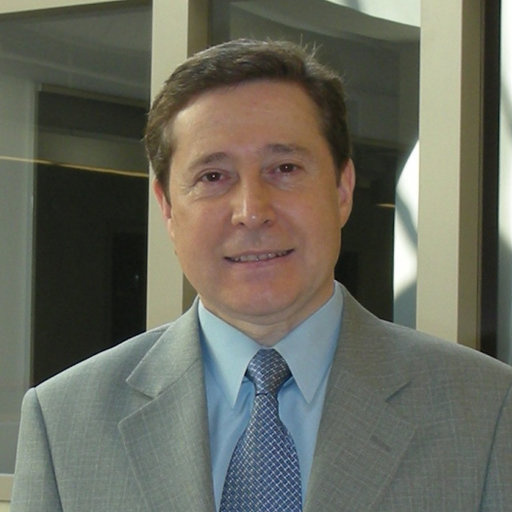
Plamen Ch. Ivanov
Professor Ivanov, PhD, DSc, is Director of the Keck Laboratory for Network Physiology at Boston University, Associate Physiologist at the Division of Sleep Medicine, Brigham and Women’s Hospital, and Lecturer in Medicine at Harvard Medical School. He has introduced innovative ways of analyzing and modeling physiologic systems, adapting and developing concepts and methods from modern statistical physics and nonlinear dynamics. He has investigated the complex dynamics and underlying control mechanisms of a range of physiological systems, including studies on cardiac and respiratory dynamics, sleep-stage transitions, circadian rhythms, locomotion and brain dynamics, and has uncovered basic laws of physiologic regulation. He is the originator and founder of the new emerging field of Network Physiology, to address the fundamental question of how diverse organ systems and sub-systems in the human body interact as a network and continuously coordinate, synchronize and integrate their functions to produce health and disease. Dr. Ivanov is one of the nine founding members of PhysioNet, an NIH sponsored data sharing research resource. His research has been funded by the W. M. Keck Foundation, NIH, Office of Naval Research (ONR) and the US-Israel Binational Science Foundation (BSF). For his achievements, Dr. Ivanov was elected Fellow of the American Physical Society in 2010. He is recipient of the Sustained Research Excellence Award (2009-2011) of the Biomedical Research Institute, Brigham and Women’s Hospital, Harvard Medical School; of the Georgi Nadjakov Medal, Bulgarian Academy of Sciences (2012), and of the Pythagoras Award for significant achievements in interdisciplinary research (2014). He served on several Editorial and Advisory Boards, including EPL (Europhysics Letters), EPJ Nonlinear Biomedical Physics, Journal of Biological Physics (JOBP), Frontiers in Fractal Physiology, Physiological Measurement

Klaus Lehnertz
Professor Lehnertz, PhD, is a Physicist and Director of the Neurophysics Group at the Department of Epileptology at Bonn University Medical Center. In addition, he is Co-Director of the Interdisciplinary Centre for Complex Systems and an affiliated member of the Helmholtz-Institute for Radiation and Nuclear Physics at Bonn University. He is Co-initiator of the International Seizure Prediction Group, which brings together researchers from a wide range of backgrounds including epileptology, neurosurgery, neurosciences, physics, mathematics, computer science, and engineering to deepen scientific and medical understanding of epilepsy and to develop new diagnosis, treatment and intervention options for patients with epilepsy. For more than two decades, his research group has been developing methods of data analysis and a theoretical framework to understand how brain sub-systems dynamically interact and coordinate functions under physiological and pathophysiological activities. His research interests include nonlinear dynamics, complex networks, statistical physics, neurophysics, computational physics, physics of imaging, medical physics, and epilepsy. He is the author of more than 200 original publications in international peer-reviewed journals, reviews, book chapters, and books.
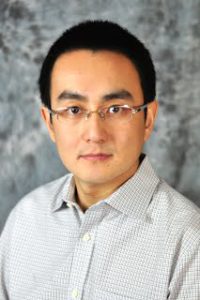
Kang K L Liu
Dr. Liu is a statistical physicist who works at the interface of physics, neuroscience and physiology. After received his PhD in physics from Boston University in 2013, Dr. Liu did a postdoctoral research fellowship in the Division of Sleep Medicine at Brigham and Women’s Hospital, Harvard Medical School. He has also worked as a Research Scientist in the Department of Physics at Boston University and a Visiting Research Fellow at the Neurology Department of BIDMC, Harvard Medical School. Currently he is a Research Scientist at Brandeis University working on modeling synapse structure and growth with the aim to elucidate basic mechanisms underlying memory storage. Dr. Liu’s interdisciplinary research focuses on employing tools and concepts from statistical physics to understand complex behaviors and phenomena in physiological and biological systems. His research projects involve building statistical physics models inspired by observations from neuroscience experiments and developing data analysis methodology to probe networked interactions among physiological systems.

Hagen Malberg
Professor Malberg, PhD, is Chair and Director of the Institute for Biomedical Engineering at Dresden University of Technology, Director of Steinbeis Research Center of Applied Biomedical Engineering, Dresden, and member of the Faculty of Electrical and Computer Engineering and the Medical Faculty “Carl Gustav Carus”, Germany. He received his PhD from Max-Delbrück-Center for Molecular Medicine in 1999. His work focuses on medical sensor technologies (contactless sensing, biosignal processing, decision support machines, automatic control in medicine, medical robotics, medical imaging and image processing) with clinical applications in cardiovascular medicine (cardiology, intensive care, cardiac surgery, sleep medicine), ambient assisted living, neurosurgery and rehabilitation medicine. He is the inventor of 17 patents. His vision is to support the development of a new generation of medical devices — being comfortable, reliable, clinical suitable and predictive, cheaper and mobile. Dr. Malberg is a member of IEEE-EMBS, German Society of Biomedical Engineering (DGBMT), European Society of Cardiology, German Hypertension League, European Sleep Research Society (ESRS). He is Chair of the 24th annual congress of the German Society of Sleep Research and Sleep Medicine (DGSM) 2016 and the Joint Congress of the German Society of Biomedical Engineering (DGBMT) and the German, Austrian and Swiss Societies of Medical Physics (DGMP) 2017.

Dick Moberg
Dick Moberg has degrees in Electrical Engineering and Biomedical Engineering from the University of Pennsylvania in Philadelphia. He is the founder and CEO of Moberg Research, Inc. which performs research and development in the field of neurocritical care. He has been actively involved in clinical neuromonitoring for over 40 years with most of that time in industry. He and his colleagues have developed three generations of commercial brain monitors used in surgery and critical care. The most recent focus has been to develop a system to collect and time-synchronize high-resolution data from patients in neurocritical care. The data from this device reveals important dynamics of the injured brain. He is leading an international collaboration to develop a new “medical record for the brain”. The data in this record greatly improves the existing medical record with better visualization and detection of events as well as patient state transitions. The hope is that with new analytic techniques and new concepts such as network physiology, clinicians will be able to provide more precise management for these brain injured patients.
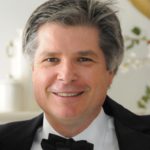
J. Randall Moorman
Randall Moorman, M.D., is Professor of Medicine, Physiology, and Biomedical Engineering at the University of Virginia where he is a clinical cardiologist and founding Director of the UVa Center for Advanced Medical Analytics. He completed his undergraduate and medical degrees at the University of Mississippi, did clinical training at Duke Hospital where he was Chief Medical Resident, and undertook basic science research training at Baylor in molecular electrophysiology and membrane biophysics. His research focuses on bedside prediction of subacute, potentially catastrophic illnesses using advanced mathematical and statistical pattern recognition analyses of time series data from clinical monitors. His work initially centered on neonatal sepsis, a life-threatening infection of the bloodstream, and now on adult patient deterioration in ICUs and hospital wards. He developed sample entropy for use in physiological time series, and he introduced coefficient of sample entropy for detection of atrial fibrillation. He is an inventor on 9 issued US patents, the 2014 UVa Innovator of the Year, and Chief Medical Officer of Advanced Medical Predictive Devices, Diagnostics, and Displays. He is vice-president of the Society for Complex Acute Illness and Editor-in-Chief of Physiological Measurement.

Begonya Otal
Begonya Otal holds a MSc and a PhD in Telecommunication Engineering from the Polytechnic University of Catalonia (UPC), Barcelona, Spain. She also has a MSc. in Cerebrovascular Medicine from the Charité University Hospital – Humboldt-Universität zu Berlin, Germany. Dr. Otal has worked as a researcher in multinational companies (Philips, Biotronik) and non-profit research institutions (CTTC, IDIBAPSHospital Clinic Barcelona, BDIGITAL Tech Center). Since 2016, Dr. Otal is part of g.tec medical engineering, a growing biomedical enterprise with two branches in Austria (Graz and Schiedlberg), one branch in Spain (Barcelona), one branch in the US (Albany, New York) and distribution partners all over the world. During the last 17 years, she strongly contributed on technological improvements in the medical and neuroscience fields, collaborating in a number of industrial and EU-funded R&D projects, and co-authoring around 40 publications and 8 patent applications

Louis M. Pecora
Dr. Pecora is currently a research physicist at the Naval Research Laboratory, Washington, DC, where he heads the section for Magnetic Materials and Nonlinear Dynamics in the Materials and Sensors branch. He received his B.S. degree in physics from Wilkes College and he then enrolled in the Syracuse University Solid State Science program from which he received a Ph.D. in 1977. In the same year, he was awarded an NRC postdoctoral fellowship at the Naval Research Laboratory where he worked on applications of positron annihilation techniques in determining electronic states in copper alloys. This led to a permanent position at NRL. In the mid-1980’s Dr. Pecora moved into the field of nonlinear dynamics in solid state systems. Subsequent work has focused on the applications of chaotic behavior, especially the effects of driving systems with chaotic signals and coupling nonlinear dynamical systems in complex networks. This has resulted in the discovery of synchronization of chaotic systems, control and tracking, and dynamics of many coupled, nonlinear systems. Recently his research interests have turned to quantum chaos and collective behavior of oscillators in large complex networks, especially using the techniques of computational group theory. Dr. Pecora has published over 150 scientific papers and has 5 US patents for the applications of chaos. His original paper on the synchronization of chaotic systems has over 5000 citations and is the 10th most cited paper ever in Physical Review Letters. In 1995 he received the Sigma Xi award for Pure Science for the study of synchronization in chaotic systems.

Thomas Penzel
Professor Penzel, PhD, graduated from physics (1986), human biology (1991), and physiology (1995) at the University Marburg, Germany. In 1997 he received a certificate for sleep medicine and a certificate for medical informatics. In 2001 he became Professor at the University of Marburg. In 2006 he moved to Berlin and joined the interdisciplinary sleep medicine center at the Charité university hospital where he is the scientific director of the sleep center. In 2001 he received the Bial award for clinical medicine in Portugal, in 2008 the Bill Gruen Award by the Sleep Research Society, in 2012 the Somnus Award in Germany, and in 2014 the distinguished development award by the Chinese sleep research society. He is the treasurer of the World Society for Sleep (WSS), the secretary of the German Sleep Society (DGSM), and the chair of the sleep medicine committee of the European Sleep Research Society (ESRS). He is a board member of the German Society on biomedical engineering (DGBMT) and chair of the IEEE EMB technical committee on cardiopulmonary systems. He published more than 200 journal papers, edited and coedited more than 10 books and many book chapters. His work is dedicated to sleep research and sleep medicine in diagnostic methods, physiology and pathophysiology. Much is related to the cardiovascular system and to sleep disordered breathing. He is involved in non-linear signal processing and coupling between the cardiac and respiratory system, both under central cortical control during wakefulness and sleep.

Arkady S. Pikovsky
Professor Pikovsky, PhD, is Chair of theDepartmant of Physics and Astronomy, University of Potsdam, Gremany. He graduated from the Gorky State University (USSR) in 1987, and worked in the field of nonlinear dynamics and theory of chaos in the Institute ofApplied Physics of the Soviet Academy of Sciences. In 1990-1992 was anAlexander von Humboldt fellow at the University of Wuppertal, Germany.Since 1992 he is with the University of Potsdam, first as a research fellow andsince 1997 as Professor. His work is in the fields of space-time chaos, dynamical regimes at the border of chaos and order, synchronization theory, noise-induced effects in nonlinear systems, methods of nonlinear data analysis of complex systems, patterns and structures, nonlinear and chaotic effects in disordered Hamiltonian dynamics. He is co-author of three monographs: “Synchronization: A Universal Concept in Nonlinear Sciences”, together with M. Rosenblum and J. Kurths, published by CUP in 2001; “Strange Nonchaotic Attractors” together with U. Feudel and S. Kuznetsov, published by World Sci. in 2006; “Lyapunov Exponents” together with A. Politi, published by CUP in 2016, and of more than 250 papers in refereed journals. Current research interests include study of complex synchronization regimes in networks of dynamical systems, with applications to life sciences. He served as panel member of the German Science Foundation (DFG) for Statistical Physics and Nonlinear Dynamics. A. Pikovsky is Fellow of the American Physical Society and Chaotic and Complex Systems Editor of Journal of Physics A: Mathematical and Theoretical.

Caterina A. M. La Porta
Caterina A. M. La Porta is currently research professor of General Pathology at University of Milan (permanent since 2002) and group leader of the Molecular Oncology Laboratory at the University of Milan. She graduated “cum laude” at the University of Milan in 1989, obtained the PhD in Physiological Science at the same University. She was postoctoral researcher at DFKZ in Heidelberg and Rockefeller University and fellow at Karolinska Institut in Stockholm. In the past few years she was visiting scientist in many university and institutes, including MIT, Cornell University and Aalto University. The focus of her group is to understand cancer progression and related mechanical properties. The group is also investigating the mechanisms underlining neurodegenerative pathologies. Member of many international societies, referee and member of the editorial board of many international journals. She organized several workshops and conferences including two interdisciplinaray workshops on the physics of cancer funded by Cecam and ESF.
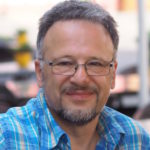
Michael G. Rosenblum
Professor Rosenblum, PhD,has been a research scientist and Professor in the Department of Physics and Astronomy, University of Potsdam, Germany, since 1997. His main research areas are nonlinear dynamics, synchronization theory, and time series analysis, with application to biological systems. The most important results include description of phase synchronization of chaotic systems, analysis of complex collective dynamics in large networks of interacting oscillators, development of feedback techniques for control of collective synchrony in neuronal networks (as a model of deep brain stimulation of parkinsonian patients), methods for reconstruction of oscillatory networks from observations, application of these methods to analysis of cardio-respiratory interaction in humans. He studied physics at Moscow Pedagogical University, and went on to work in the Mechanical Engineering Research Institute of the USSR Academy of Sciences, where he was awarded a PhD in physics and mathematics. He was a Humboldt fellow in the Max-Planck research group on nonlinear dynamics, and a visiting scientist at Boston University. He is a co-author (with A. Pikovsky and J. Kurths) of the book “Synchronization: A Universal Concept in Nonlinear Sciences”, Cambridge University Press, 2001 and has published over 100 peer-review publications, including 5 papers in the journals of the Nature Group and 11 papers in Physical Review Letters. Michael Rosenblum served as a member of the Editorial Board of Physical Review E. Since 2014 he is on the Editorial Board of Chaos: Int. J. of Nonlinear Science. He was named an American Physical Society Outstanding Referee for 2015.

Antonio Scala
Dr. Scala, holds a Master degree in Physics and Computer Science from the University of Napoli “Federico II”, a PhD in condensed matter Physics from Boston University. He is a specialist in Operational Research and Decisional Strategies at the department of Statistics of Roma “La Sapienza”. He is also a research scientist in the CNR Institute for Complex Systems at the University of Roma “La Sapienza”, associate professor at IMT Alti Studi Lucca and research Fellow at the London Institute for Mathematical Sciences, LIMC. Dr. Scala is an interdisciplinary scientist with background in statistical physics and computer Science. He has published seminal papers on complex networks and has edited the first book on networks of networks (“Networks of Networks: The Last Frontier of Complexity”, Springer 2014). Currently, he works with the Italian National Health Institute on problems of vaccines and online misinformation. Recently, Dr. Scala has applied network science to set up a framework for representation and understanding of medical data in clinical dentistry and has published first case studies on applications of networks in childhood orthodontics. His research focuses on developing tools and metrics to derive knowledge from medical records, and complementing clinical trials with statistical analyses of large medical databases.

Ruedi Stoop
Professor Stoop studied mathematics at the University of Zurich and completed his PhD in computational physics at the same university in 1991. After obtaining grants from the Swiss National Science Foundation, he became a reader in computer science at the School of Life Sciences, University of Applied Science Northwest Switzerland, and worked in parallel as a scientific advisor and designer for several industrial companies. He became an Associate Professor in physics at the University of Berne in 1997, Adjunct Professor in mathematics at the University of Zurich in 2004 and soon after also in theoretical physics at the Swiss Federal Institute of Technology (ETH). In 2008 he obtained tenure in Neuroscience and Physics at the Institute of Neuroinformatics, run jointly by the University of Zurich and the Swiss Federal Institute of Technology (ETH). His main research directions lie along two related paths: Nonlinear dynamics of biological systems, and principles and applications of biocomputation, seen as domains of mathematics, physics and information science. Prof. Stoop has published a large number of peer reviewed papers documenting a true interdisciplinary approach, from physics over mathematics, engineering, biology to data science. He authored and co-authored books published by Springer, Birkhäuser and World Scientific
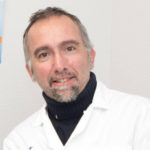
Sebastiano Stramaglia
Dr. Stramaglia is an Associate Professor of Applied Physics at the University of Bari, Italy, and External Scientific Member of the Basque Center for Applied Mathematics, Bilbao, Spain. He received his Ph.D. in Statistical Mechanics of random surfaces from the University of Bari in 1995, and the Laurea degree in models of strongly correlated electronic systems in 1991. Since 2001 he is a member of the Center of Excellence “Innovative Technologies for Signal Detection and Processing”, funded by the Italian Ministry for Scientific Research; since 2002 he is a member of the V National Scientific Commission of INFN-Istituto Nazionale di Fisica Nucleare, Italy. He chaired several international events, including “Modeling Migraine: from nonlinear dynamics to clinical neurology” July 2009, Berlin, and “Nonlinear dynamics in electronic systems” July 2013, Bari. Editor of the books “Modelling Biomedical Signals”, World Scientific 2002, and “Emergent Complexity from Nonlinearity, in Physics, Engineering and the Life Sciences”, Springer 2017. He has been visiting scientist at the Institute for Theoretical Physics NORDITA and at the Department of Data Analysis of the University of Gent, Belgium, and visiting professor at Biocruces Health Institute, Bilbao, Spain. Since 2003 he is team leader of the INFN project “Biological applications of Theoretical Physics Methods”. His research focuses on dynamical networks and Granger causality approaches to physiological interactions, in particular he developed a kernel approach for the inference of nonlinear coupling among dynamical systems with applications to brain function and brain-heart interactions.

Béla Suki
Professor Suki is received BS in Physics (1982) and PhD in Biomechanics (1987) from the University of Szeged, Hungary. He worked at INSERM, Nancy, France in 1988 and in the Meakins-Christie Laboratories, McGill University, Montreal in 1990. He received the Dean’s special research associate position at the Department of Biomedical Engineering at Boston University where he became assistant professor in 1996, associate professor in 2001 and full professor in 2007. In 2007, he was elected Fellow of the American Institute for Medical and Biological Engineering. In 2009, he received presidential award from the National Institutes of Health and became honorary professor of Medical Physics and Informatics, University of Szeged, Hungary. He is Fellow of the Biomedical Engineering Society. He was visiting professor at Kyoto University, Japan, University Hospital of Bern, Switzerland, University of Western Australia, Perth, and the University of Ceara, Fortaleza, Brazil. Dr. Suki has published work in morphometric and acoustic network modeling of the lungs airway branching tree. His group introduced elastic networks to describe the mechanics and failure of extracellular matrices to understand how lungs deteriorate during diseases such as emphysema and fibrosis. He developed network modeling approaches to predict the long-term outcome and quality of life following lung surgery, and has implemented a neural network model of the brain respiratory center to describe the variability of breathing patterns. Dr Suki’s current research interests include respiratory physiology, tissue homeostasis and modeling nonlinear and network phenomena in physiology and biology.
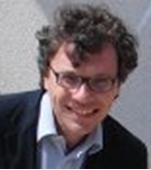
Stefano Zapperi
Stefano Zapperi is professor of theoretical physics at the University of Milano. He obtained is Ph. D. from Boston University. After a postdoctoral fellow at ESPCI, Paris, he obtained research position at the University of Roma “La Sapienza”, at the University of Modena and Reggio Emilia and at National Reseach Council of Italy in Milano. He has been named Finland Distinguished Professor at Aalto University and is group leader at the ISI foundation in Torino. He is member of the editorial board of JSTAT. He organized nine international workshops and symposia on applications of complex systems theory, including two interdisciplinaray workshops on the physics of cancer funded by Cecam and ESF, and was invited to be part of the scientific committee of four international conferences. In 2007, he acted as the secretary of the International Conference on Statistical Physics (STATPHYS 23). In 2004 he received the Marie Curie Excellence award and in 2011 an Advanced Grant from the European Research Council. He is an expert in the statistical mechanics of non-equilibrium complex systems and has worked in fracture, plasticity, friction, magnetism and quantitative biology.
